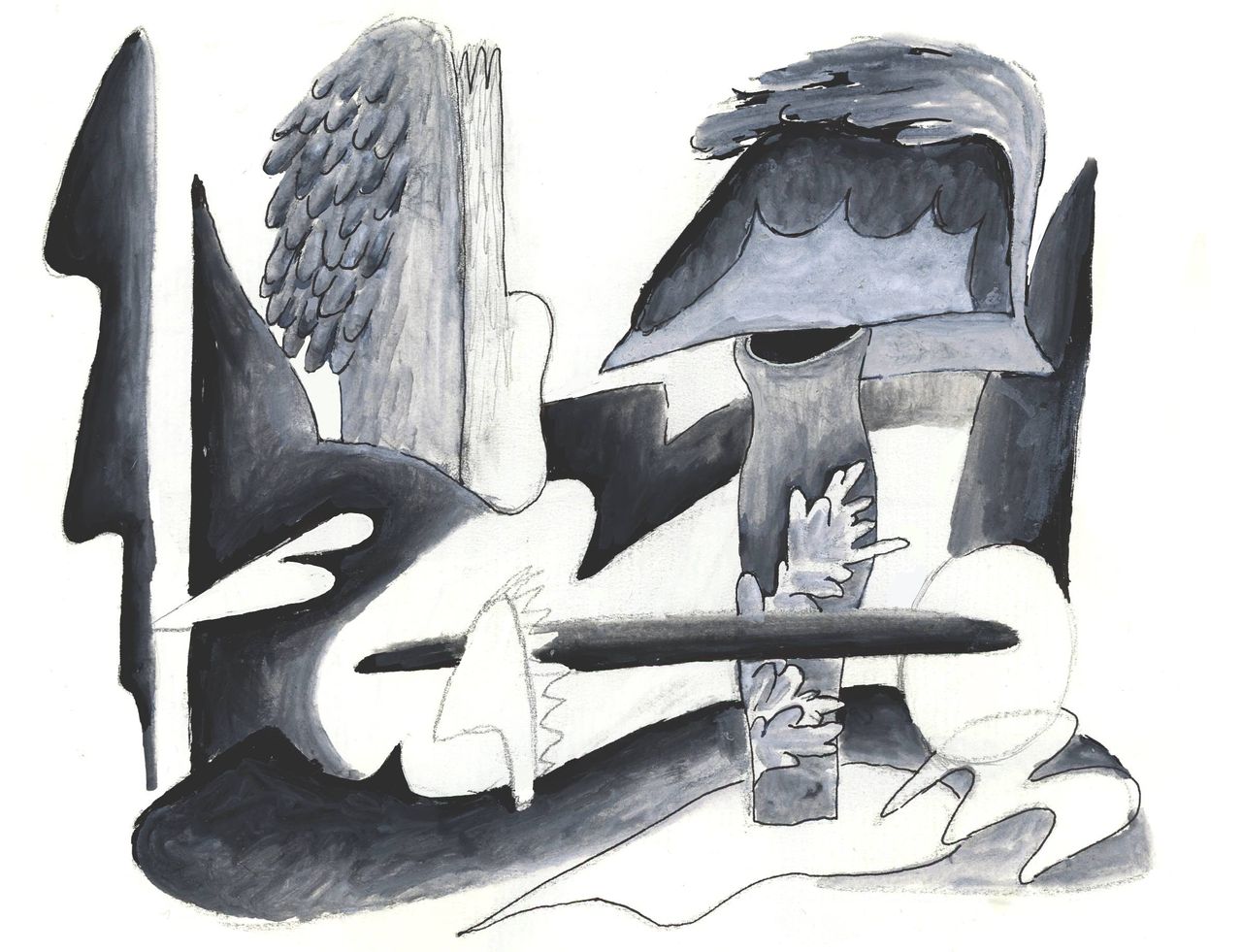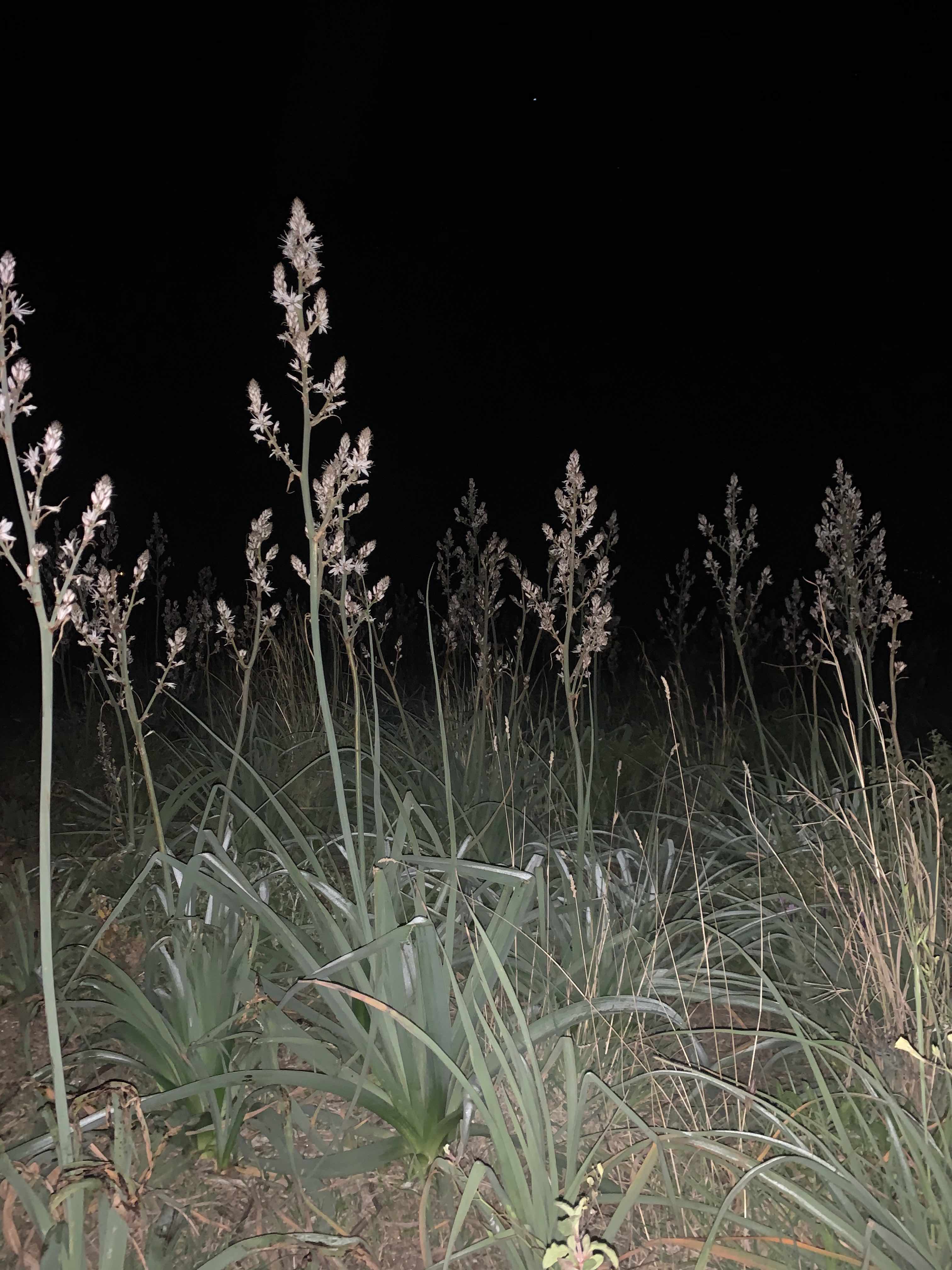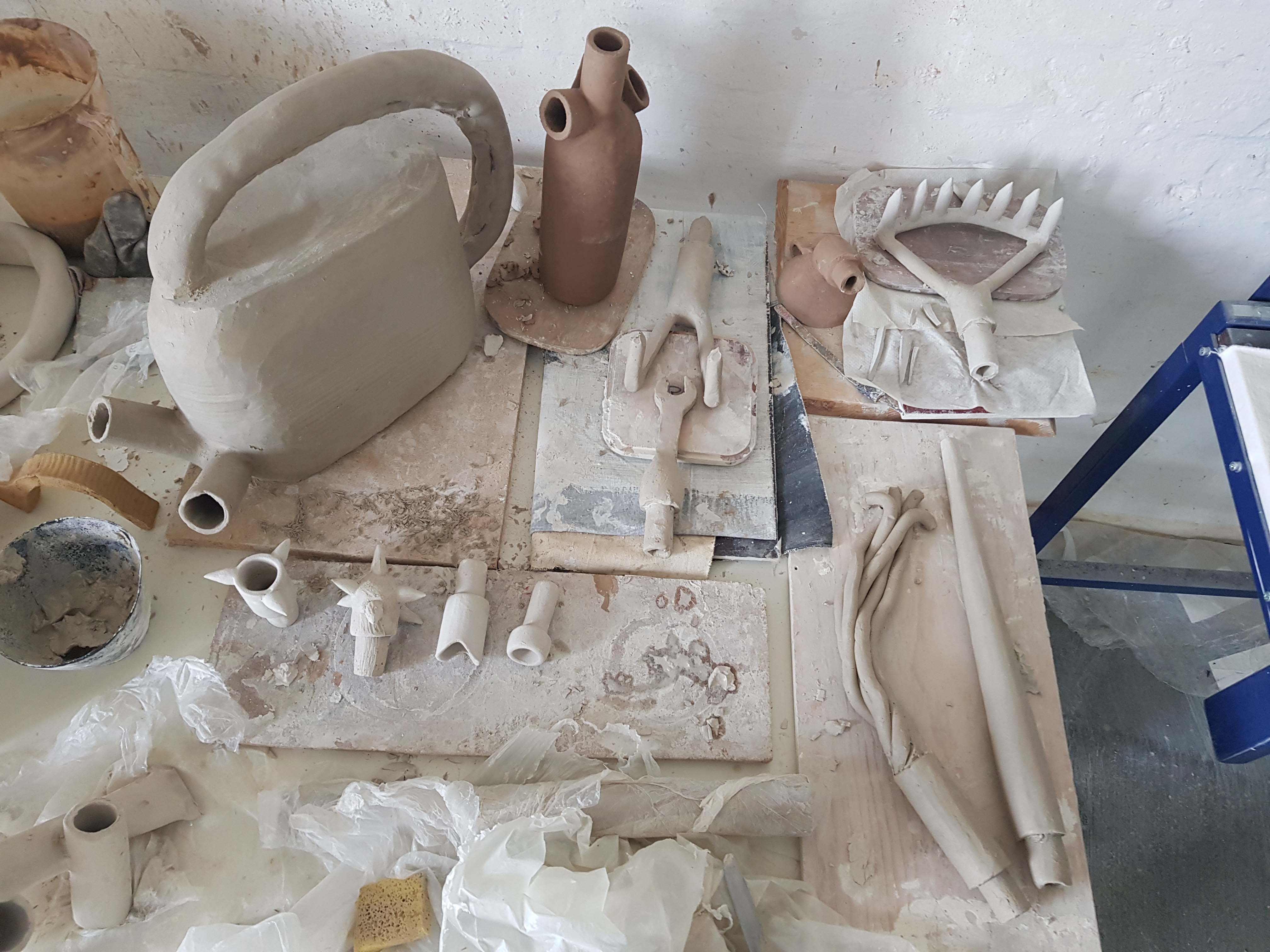
Pencil and ink on paper, 2022
Stéphane Tony Krust. Maquis. Le bateleur.
Charles - Let’s discuss the interior tapestries from which you draw your inspiration. In the history of gardens there is this desire to domesticate flora and fauna. Beyond aspects of comfort, I believe that in connection with these tapestries there is also the desire to invite nature into one's home.
Stéphane - Yes, as you say, it was certainly a way of bringing the garden inside, but it is also a scrupulously chosen section of nature, laden with symbolism!
Marion - At that time it was mostly useful plants... They were identified and represented in order to pass on the information to future generations. They were part of everyday life since they were a means of subsistence, of healing, etc... Would you like to tell us about your relationship with the Maquis plants represented in your painting?
S. - As a hiker, the Mediterranean landscape and the Maquis are special to me. It is a wild place, one goes there to walk, to gather... It is also historically and socially a place of resistance, of hiding, of organization outside of the established order. Painting it on this canvas is also a way of spending time there. Do you have any botanical anecdotes about these plants?
C. - Most of the plants represented have adapted to "hostile" environments. On your painted canvas we find two types of landscapes, the "Maquis", scrubland on a shale soil and the Garrigue on limestone soil. Take for example the rosemary: in midsummer, when the sun is most aggressive, its leaves are completely folded over, a strategy to limit exposure and evaporation during the day. Saving water as much as possible is one of the main objectives of these Mediterranean plants. There are also plants such as lavender and cistus, considered to be allelopathic, with biochemical compounds, essential oils for example, which are released during hot weather and thus act as cooling agents. Some of these plants do not have very strong root systems, instead they are in search of freshness in the smallest recesses and the small faults of the rock. In such a hostile environment the small size of the Kermes oak protects it from strong winds and the silver foliage of the helichrysum protects it from the aggressive sea spray and the sun. This also explains this slow movement of time, where not a drop of water falls from the sky in the scorching sun and where it is necessary to remain listless during the 4 months of summer; to put oneself on standby, and to wait for the first rains of autumn to breathe and replenish oneself.

Photo by Charles Guerlain
S. - That changes the way of looking at a landscape; this slow time.
C. - This is absolutely necessary! These plants had to get used to difficult conditions, they had to learn to grow slowly. The long summers and the slowed plant growth are very harsh conditions, but that doesn't make them age prematurely, quite the opposite! They try to take only what they need, just enough to get by, and grow slowly. In the end, they are hardened plants that live to be quite old. It’s a matter of duty as a Mediterranean landscaper to respect this idea of the reappropriation of time, which is in stark contrast to the one we know today.
M. - Can you tell us about the glaze you used on the ceramics?
S. - The ceramics have an initial "bisque firing", then I applied a layer of asphalt.

« Le bateleur », work in progress, 2022
M. - It's surprising because you work the ceramics by hand. It's a pretty natural material, you spend a lot of time turning, assembling, firing them ... and then you come and almost sabotage them, as if they were stuck in a pool of oil!
S. - Yes! Applying and making the asphalt visible on the ceramics as well as the interchangeable end pieces bring up questions in regards to the current decision-making process: Are there such tools that appeal to you in interacting with the environment?
C. - When I look at your ceramics, that little object with the spikes! (laughs). I think it's good to associate this symbol with a watering can, considering how difficult it is for the Mediterranean plants.... And this water that is fed to them only drop by drop. And your watering can with the 5 beautiful liters of water, but with the narrow, pointed nozzle that reminds you that it takes effort to get that water…
May 2022. Marion Saxod and Charles Guerlain of "Nysa paysage" and Stéphane Tony Krust
Nysa Paysage founded by a gardener and an architect-designer, Nysa Paysage aspires to slowness and refuges. Artistic direction, in the open air. Marion Saxod - Charles Guerlain contact@nysa-paysage.com